China’s engagement with Africa over the past decade is one of the most significant recent developments in the region. The People’s Republic of China, has immensely strengthened its ties with the African nations. China’s history of engagement with Africa can be traced back to the 15th Century when Chinese traders visited East Africa. But the foundation for modern day Sino-African relationships was built in the post-colonial period, when China enlarged its cooperation framework with Africa as part of its efforts to demonstrate solidarity with developing countries.
In the last ten to twenty years, China has become Africa’s largest trading partner after the European Union. Amounting to more than 200 billion USD in 2014, Sino-African trade volume is almost three times as big as US-Africa trade. Sino-African economic cooperation has diversified in the past few years and expanded to more fields including trade, infrastructure, industrial investment, finance, logistics and regional aviation. China's investment in Africa is a highlight of Sino-African economic and trade cooperation in the past years. It is set to bring Sino-African economic ties to a new level in the years to come.
Chinese Development Aid to Africa
China gives aid for development to Africa for multifarious reasons. Some are linked to China’s trade and investment agenda while others are tied to Chinese soft power objectives, in particular health and education aid. China’s economic assistance to Africa is dominated by concessional loans and export credits provided through the Ministry of Commerce and Exim Bank. People’s Republic of China’s (PRC) loans to Africa, have reportedly grown in recent years. Beijing is keenly aware that development assistance has the potential to put a more positive face on Chinese engagement that can counter negative perceptions of Chinese activities on the African continent. Estimates of China’s foreign aid vary widely due to the lack of official data and to disparate definitions of aid. Broad characterizations, such as the one adopted in this report and referred to as “economic assistance,” often include low-interest loans and PRC government-backed investments as well as grant-based development aid. A relatively small portion of Chinese economic assistance includes what typically is characterized as “official development assistance” (ODA) as provided by the world’s major aid donors, such as development grants, povertyreduction programs, humanitarian assistance, and food aid.
China's military equipment is now being used by more than two-thirds of African countries. Another important difference between China and major OECD aid donors is the level to which PRC economic assistance serves China’s development needs, by facilitating the export of raw materials to China and often requiring that a significant portion of project materials and services are to be sourced in China. By contrast, the foreign aid programs of the United States and other OECD members, with some exceptions, involve fewer direct economic linkages. Beijing reportedly has taken some tentative steps toward making its foreign aid process more centralized and transparent, coordinating its programs with other aid providers, and offering more development-oriented assistance, while continuing to eschew the label of major Official Development Assistance (ODA) donor.
The PRC has begun sending abroad “youth volunteers,” similar to U.S. Peace Corps volunteers, engaged in teaching and training in such subjects as Chinese language and medicine, computer skills, agricultural technologies, and sports.
The quantification of Chinese developmental aid to Africa has proven a difficult task for the scholars and analysts. It was in the year 2011 that the Chinese State Council released its first white paper on foreign aid, giving analysts a more detailed account of Chinese aid worldwide. The document was broken down by loans, grants and concessional loans. Officially, China provides eight types of foreign aid which are: complete projects, goods and materials, technical cooperation, human resource development cooperation, medical assistance, emergency humanitarian aid, volunteer programs, and debt relief. To Africa, China’s aid covers a wide array of fields such as agriculture, education, transportation, energy, communications, and health (Xinhua News Agency, April 21, 2011). According to the Chinese scholars, China has provided almost 900 aid projects to African countries since 1956. The aid includes assistance supporting textile factories, hydropower stations, stadiums, hospitals, and schools.
China’s Loans to Africa
The billions of dollars that China commits to Africa are repayable, long-term loans. From 2009 to 2012, China provided USD 10 billion in financing to Africa in the form of “concessional loans” (China Radio International, July 20, 2012). During Chinese President Xi Jinping’s first overseas trip to Africa in March 2013, he doubled this commitment to USD 20 billion from 2013 to 2015. The head sovereign risk analyst of Export-Import Bank of China announced in November 2013 that by 2025, China will have provided Africa with USD 1 trillion in financing, including direct investment, soft loans and commercial loans (Toh Han Shih, 2013).
China’s own policy actively contributes to the confusion between development finance and aid. The Chinese government encourages its agencies and commercial entities to “closely mix and combine foreign aid, direct investment, service contracts, labor cooperation, foreign trade and export (Piao Yingji, 2006). The goal is to maximize feasibility and flexibility of Chinese projects to meet local realities in the recipient country, but it also makes it difficult to capture which portion of the financing is, or should be categorized as aid. One rather convincing theory is that the Chinese government in effect pays for the difference between the interest rates of concessional loans provided to Africa and comparable commercial loans. Therefore, only the small difference in interest rates could qualify as Chinese aid.
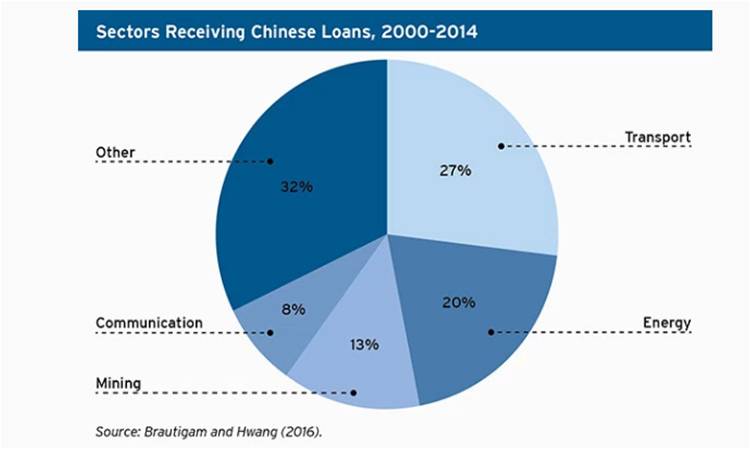
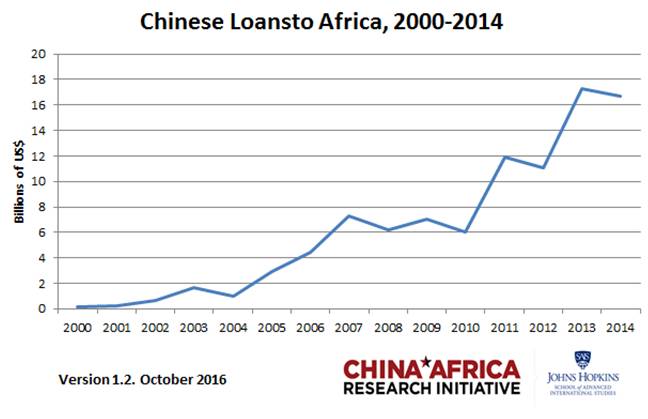
Source: Chinese Loans to Africa, SAIS China-Africa Research Initiative, 2017
Despite Chinese leaders’ claim that China’s assistance to Africa is totally selfless and altruistic, the reality is far more complex. China’s policy toward Africa is pragmatic, and aid has been a useful policy instrument since the early days of People’s Republic of China. Since the beginning of China’s reform and opening up, especially after 2000, Africa has become an increasingly important economic partner for China. Africa enjoys rich natural resources and market potential, and urgently needs infrastructure and development finance to stimulate economic growth. Chinese development finance, combined with the aid, aims at not only benefiting the local recipient countries, but also China itself.
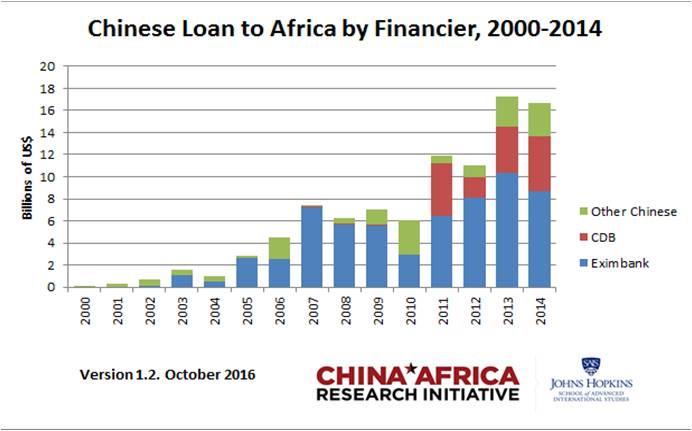
Source: Chinese Loans to Africa, SAIS China-Africa Research Initiative,2017
Investment and Trade
China’s official statistics on the country’s overseas direct investment (ODI) in Africa reveal a number of paradoxes. Simply put, China’s investment in Africa is both big and small. It is small in the sense that China is a latecomer to Africa and accounts for only a very small share of the total stock of foreign investment on the continent. At end-2011, that total stock was $629 billion, of which the Chinese share was 3.2 per cent. China’s investment in Africa has been growing rapidly and its share will rise over time, but slowly, starting from a low base. However, China’s investment in Africa is big in a relative sense. The world as a whole has six times as much direct investment in the U.S. as in Africa, reflecting the fact that most Foreign Direct Investment (FDI) goes to advanced economies. China’s pattern of investment is different. As of end-2014, China had about as much ODI in Africa (US$32 billion) as in the United States (US$38 billion) (John L. Thornton, Brookings 2016).
China’s trade with Africa has grown ten times in the last decade. The total value has hit around $300 billion according to the Fourth China-Africa Industrial Forum. China’s trade with Africa recorded $10 billion in 2000. In 2014, the figure grew to $220 billion. China is seeking to raise the amount to $400 billion by 2020 as mentioned by a former deputy minister, Yang Fuchang. Statistics reveal that China’s trade with the European Union (EU) stood at 467.3 billion euros in 2014 and $590.68 billion with the United States (Global Times Xinhua, 2015). China’s trade with Africa is largely import driven, with China taking petroleum mostly from Nigeria, Angola, Equatorial Guinea, Ghana, Cameroon, the Republic of Congo, Gabon, Uganda, South Sudan, and the Sudan. It purchases copper, cobalt, cadmium, ferrochrome, platinum, coltan, diamonds, and gold largely for industrial purposes from countries such as the Democratic Republic of Congo, Liberia, South Africa, Zambia, and Zimbabwe. Some of the largest African exporters to China are South Africa and Angola, followed by the Democratic Republic of Congo, Mauritania, Sudan, South Sudan and Zambia. As the world’s largest importer of iron ore, China has also been diversifying its purchases away from traditional suppliers such as Australia and South Africa to trade for the ore with fifteen African nations including such previously globally unimportant producers of the metal as Guinea-Bissau, Swaziland, Tanzania, Uganda, and Zambia. China takes hides and skins from Ethiopia and sometimes turns them locally into shoes. It fishes off Senegal and other African coastal countries. It grows cassava, maize, and sorghum in such place as Zimbabwe and Madagascar and ships the produce home to hungry animals in China. Recently, too, China became as major purchaser of cotton grown in Mozambique, a country not hitherto known for its cotton. But the new production was stimulated by a Chinese technical assistance effort, part of a Chinese attempt to help Mozambique improve its agricultural productivity.
China’s Trade in Terms of Exports and Imports in Africa
Africa offers markets, but smaller and contained ones, for Chinese-manufactured consumables: textiles, clothing, blankets, inexpensive footwear, headgear, toys, telecoms equipment and affordable cell telephones, furniture, caskets, computers, and televisions. To governments, China also sells jet fighters, military equipment and ammunition, military uniforms, heavy communications technology, agricultural implements, road machinery, and turbines and generators. To Africa, China sends tourists, too, consultants, project laborers and supervisors, and diplomats – all of whom bulk up the trade statistics. This month, a single Chinese province is sending a large team of investors to Zambia to seek new opportunities to sell Chinese manufacturers and grow tourism.
In addition to countries such as South Africa, Angola, and the Democratic Republic of Congo, the major importers of Chinese goods were Tanzania, Kenya, Ghana, and Liberia (Rotberg. I, 2014). There are few African countries have failed to benefit from China’s willingness to build dams, hydroelectric facilities, and thermal power plants; construct roads; erect stadia, hospitals, and party headquarters; renovate railways; refurbish ports; and upgrade mining projects. All of these various activities help boost the trade numbers. The top ten beneficiaries of China’s assistance and expanded concessionary loans (components of the great rise in two-way trade) are: Ghana ($11.4 billion), Nigeria ($8.4 billion), the Sudan (including South Sudan) and Ethiopia (both $5.4 billion), Mauritania ($ 4.6 billion), Angola ($4.2 billion), Equatorial Guinea and Zimbabwe (both $3.8 billion), Cameroon ($3 billion), and South Africa ($2.3 billion). The figures are from 2000-2011 and do not include more recent ventures, especially those in the Democratic Republic of Congo, Kenya, Madagascar, Tanzania, Zambia, and Zimbabwe (Rotberg I, 2014). The top eight countries account for 72 percent of export value, with South Africa, Nigeria, and Egypt constituting nearly half (44 percent) China's top African export destination. According to the following figure the top export destinations are South Africa, Nigeria, Egypt, Algeria, Ghana and Angola (Lloyd Thrall, 2015: pg 29).
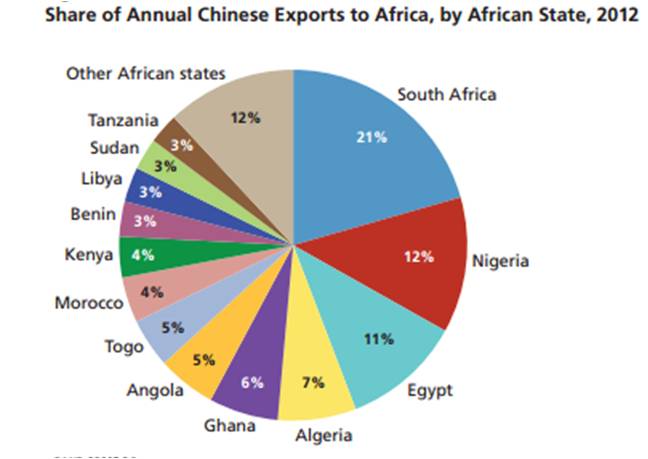
Source: Rand Corporation, Lloyd Thrall, 2015: pg 29
2016 marks the opening year of implementing China-Africa “Ten Cooperation Plans” and US$60-billion financial support initiated by President Xi Jinping at Johannesburg Summit of the Forum on China-Africa Cooperation(Ministry of Commerce People’s Republic of China, 2017). China regarded the implementation of the new trade and economic measures of the “Ten Cooperation Plans” as the mainline of the trade and economic cooperation with Africa. This has profoundly docked the development strategy with Africa, systematically summarized cooperation projects, designed and built domestic and overseas mechanism and jointly promoted the subsequent work to make positive progress. Among these, cooperation plans on China-Africa industrialization, infrastructure, agricultural modernization, trade investment facilitation are fully and solidly promoted. The subsequent US $5 billion capital increase work of special loans of the development of medium and small sized enterprises of Africa has been successfully completed and the China-Africa capacity cooperation fund of US $10 million of the first-batch of funding has officially opened. In July, China successfully held the coordinators’ summit fruit implementation conference in Beijing and 104 officials of the ministerial level or above from 52 African member countries of the Forum participated in the conference. President Xi Jinping sent a congratulatory letter to the conference. During the conference, China informed Africa the progress of the implementation of the new trade and economic measures, held dialogues between principals of the Chinese financial institutions and Africa and signed 20 inter-governmental trade and economic cooperation documents with Africa. These were highly appreciated by Africa, ushering a new hot trend of China-Africa trade and economic cooperation (Ministry of Commerce People’s Republic of China, 2017).
Since 2016, the Ministry of Commerce, together with its counterparts of 9 African countries such as Gabon, Nigeria, Ethiopia, Benin, Madagascar, Tanzania, Eritrea, Mauritius and South Africa held the following meetings: a new bilateral joint committee on trade and economics; the trade and economic sub-committee under the 6th conference of China-South Africa bilateral committee; the preparation meeting of the 2nd conference of China-Angola trade and economic guidance committee; the technical negotiation conference of China-South Africa joint working group and the ministerial and working group conference of China-Egypt capacity cooperation mechanism; and the working talks with 22 counterpart ministers from 16 African countries such as Egypt, Eritrea, Algeria and Tanzania. The Ministry of Commerce fully played the leading and planning role of the inter-governmental trade and economic cooperation mechanism, coordinated to promote the major problems and projects in bilateral trade and economic cooperation. During the 10th conference of China-Mauritius Joint Committee on Trade and Economics held in November 2016, both sides jointly signed the MOU on launching the feasible study on China-Mauritius free trade agreement. This is the first joint feasible study of the free trade agreement conducted between China and economy in the African regions(Ministry of Commerce People’s Republic of China, 2017).
China’s Investment in Africa Increased Greatly
In January-November 2016, the non-financial direct investment flow from Chinese enterprises to Africa increased 25 per cent, with more than US $3 billion. The main features are as follows. Firstly, the investment in the African countries with abundant resources and rapid economic growth increased greatly. The non-financial direct investment flow to countries such as Ivory Coast, Senegal, Rwanda and Uganda increased more than 100 per cent year on year. Secondly, the platform role and the leverage effect of the trade and economic cooperation zones such as industrial gardens and zones further appeared. The first-phase construction of the expansion area of Egypt-Suez trade and economic cooperation area was officially started and more than 10 world-famous enterprises expressed intention to invest and start business in gardens. Thirdly, the industrial investment and capacity cooperation were promotion at a faster pace. Manufacturing industry accounted for more than 10 per cent of the non-financial direct investment in Africa. The project of South Africa factory of Beijing Auto Mobile Group with US$800-million investment laid a foundation, planning to produce 100,000 automobiles annually. This factory will be the largest automobile manufacturer in South Africa.
In the current complex and versatile international and regional situation, China’s investment in Africa continues to increase greatly, embodying Chinese enterprises’ confidence in tapping African market and China’s increasingly anti-risk firmness in its investment and cooperation with Africa (Ministry of Commerce People’s Republic of China, 2017). In the year 2016, the contractual value of contracted projects newly signed by Chinese enterprises in Africa reached US$65.2 billion, with an increase of 7.2 per cent year on year.
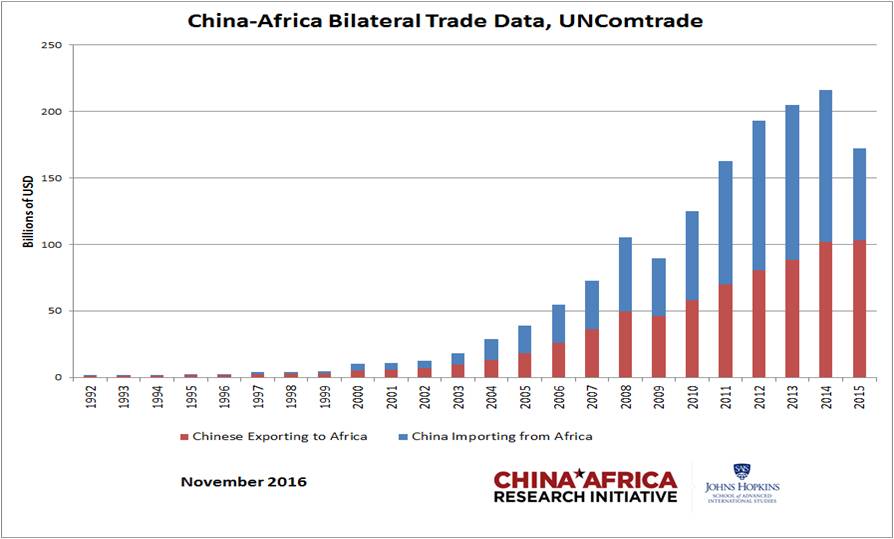
Africa continued to be the second largest market of China’s contracted projects in other countries. At the same time, four out of ten countries with which China newly signed the largest contract value were from Africa, namely Egypt, Angola, Algeria and Ethiopia. Nine out of twenty projects newly signed by China with the largest contract value were in Africa. Among these, the project of the new capital construction of Egypt and the project of coal-fired power plant of Egypt marked the second largest one and the third, with a contract value of US $2.7 billion and US $2.64 billion. The integrated camp building cooperation between Chinese enterprises with Africa had achieved initial success. The Ethiopia-Djibouti railway officially has opened transport service, the underline engineering of Kenya Mombasa-Nairobi railway project has been completed too. These projects not only provided a strong demonstration effect to the transformation and upgrading of China-Africa infrastructure cooperation, but also helped the economic integrated development of Africa and exerted a continuous overflow effect on the regional development and the development of the economic belt along the line (Ministry of Commerce People’s Republic of China, 2017).
The Sino-African relations covers health, finance, aid, education co-operation and trade. Most of these are not easily measurable, but those that are in particular trade, investment and finance show signs of weakening.Reduced external demand and lower commodity prices caused a 13 per cent contraction in Chinese imports in the 12 months to October 2015 over the same period a year earlier. By comparison, the value of imports from Africa over the period fell 32 per cent The contraction in imports is steeper for Angola, South Africa, Republic of Congo, Equatorial Guinea and Zambia, China’s main African trading partners, which together account for more than 70 per cent of all Chinese imports from Africa. China is Africa’s main export market and also its largest source of imports. After 15 years of closer trade ties, China accounts for about 20 per cent of imports in Sub-Saharan Africa and about 15 per cent of its exports. But in the past year the share of exports to China has started to decline while the growth of Chinese imports has been accelerating. The combination of rising imports and falling exports caused the trade balance of sub-Saharan Africa to plummet (Valentina Romei; Financial Times, 2015).
Some African countries are more exposed to the Chinese market than the continental average would suggest. Sixteen countries sent more than 20 per cent of their exports to China in 2014. For seven countries which includes Sierra Leone, Eritrea, Republic of Congo, Angola and Sudan, China accounted for 40 per cent of their total exports. The steep contraction in the value of Chinese imports from Africa is largely due to the fact that commodities and crude materials make up more than 85 per cent of the total. Aside from the general slowdown in imports and commodity prices, the data also suggest trade preferences are changing. For example, according to Chinese customs statistics the value of total iron ore imports contracted at an annual rate of 40 per cent in the 12 months to October, while the total volume of imports contracted by only 0.1 per cent, reflecting falling demand and lower prices. However the volume of iron ore imports from Africa contracted by more than 17 per cent annually, while that from Latin America was stable and from Oceania mostly in Australia increased (Valentina Romei; Financial Times, 2015).
China is one of the biggest player in Africa with its interests focused on mining and oil. In 2013, China was the largest mergers and acquisitions investor in Africa, accounting for 37 per cent of all deals by value, according to Dealogic (Valentina Romei; Financial Times, 2015). About 80 per cent of Chinese acquisitions in Africa were in the mining or oil sectors. But later on Chinese acquisitions amounted less than $600m, about 1/20th of the value of two years ago. The slowdown is even more evident in Chinese support to the African infrastructure projects. According to the annual report of the Infrastructure Consortium of Africa, Chinese lending for projects in 2014 was substantially lower than in each of the previous three years. China is still the largest lending country to infrastructure projects in Africa but in 2014 it accounted for only 4 per cent of total commitments, compared with about 50 per cent the previous year (Valentina Romei; Financial Times, 2015).
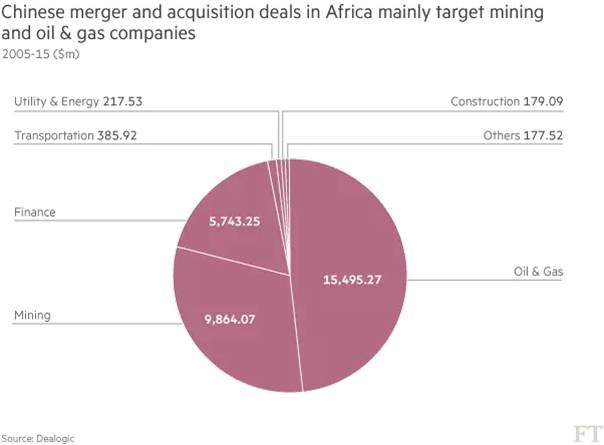
Conclusion
There exists an intertwined interests of China and Africa where China has four overarching strategic interests in Africa. The interest includes access to natural resources, particularly oil and gas; markets for Chinese exports; sufficient security and stability to continue its commercial activities. African governments look towards China to contribute to their economic development through aid, investment, infrastructure development, and trade. There have been some positive effects of Chinese engagement in Africa like - job creation, the development of critically needed infrastructure, and an increase in economic growth, particularly in sectors or geographic areas in which international financial institutions and Western governments and companies have been unwilling to engage.
The Chinese engagement on the other hand has also had detrimental effects. It has helped nondemocratic regimes cling to power and reinforced many African countries dependence on raw materials and unskilled labor. They have contributed to the loss of hundreds of thousands of manufacturing jobs in certain industries, such as textiles. Lastly, they have also contributed to high levels of debt, economically unviable decisions, and official corruption. African leaders and governments generally portray Chinese engagement as positive. Opinion polls show that Africans hold generally positive views of China, but public opinion of China is also negatively affected by perceptions that Chinese investment contributes to corruption, waste, poor working conditions, and job displacement. To better foster sustainable, long-term relationships in Africa, China has increased its efforts to develop soft power (media, culture, and people-to-people exchanges) and provide more aid in areas such as health, sustainability, and security
End Notes
-China’s Foreign Aid, Xinhua News Agency, April 21, 2011.
-China to Provide 20 billion USD Loan Credits to Africa in Three Years, Cai Xin, March 25, 2013.
-China To Complete 10 Billion USD Concessional Loans to Africa before the End of Year,, China Radio International, July 20, 2012.
-Chinese Loans to Africa, SAIS China-Africa Research Initiative, Johns Hopkins University, 2017
-John L. Thornton, ‘China’s Engagement with Africa – From Natural Resources to Human Resources’, China Center at BROOKINGS, 2016.
-Global Times, ‘China-Africa trade approaches 300 billion dollars in 2015’, Xinhua, 2015.
-L. Gamache, Hammer & L. Jones; ‘China’s Trade and Investment Relationship with Africa’ , USITC Executive Briefings on Trade, 2013.
-Lloyd Thrall, ‘China’s Expanding African Relations Implications for U.S. National Security’, Rand Corporations, 2015.
-Ministry of Commerce People’s Republic of China, ‘2016 Business Review XXVI: China-Africa Trade and Economic Cooperation Makes Steady Progress’, MOFCOM, 2017.
-Piao Yingji, “The Evolution and Future Trend of China’s Direct Investment in Africa,” 《中国对非洲直接投资的发展历程与未来趋势》[Hai Wai Tou Zi Yu Chu Kou Xin Dai], Volume 5, 2006.
-Report on Development of China’s Outward Investment and Economic Cooperation, Ministry of Commerce, December 2012.
-Rotberg I, ‘Chinese Trade with Africa Hits Record High’, Senior Fellow at Centre for International Governance Innovation and President Emeritus, The World Peace Foundation, 2014
-Toh Han Shih, “China to Provide Africa with US$1 trillion financing,”, South China Morning Post, November 18, 2013.
-Thomas Lum, ‘China's assistance and government sponsored investment activities in Africa, Latin America and South East Asia’; CRS Report for Congress, 2009.
-Valentina Romei, ‘China and Africa: trade relationship evolves’, Financial Times, 2015.
-Wen Jiabao, ‘China Did Not Exploit One Single Drop of Oil or One Single Ton of Minerals from Africa’, China.com.cn,September 15, 2011. http://www.china.com.cn/economic/txt/2011-09/15/content_23419056.htm.
-http://www.rand.org/content/dam/rand/pubs/research_reports/RR500/RR521/RAND_RR521.pdf
-http://www.rand.org/pubs/research_reports/RR521.html
-https://www.usitc.gov/publications/332/2013-04_China-Africa(GamacheHammerJones).pdf
-https://www.afdb.org/fileadmin/uploads/afdb/Documents/Publications/Anglaischina.pdf
-https://www.hhs.se/contentassets/bc7089cd2c364b2cae4c287184ad743b/yu-zheng---chinas-aid-and-investment-in-africa-.pdf
-http://static1.squarespace.com/static/5652847de4b033f56d2bdc29/t /571a2daf20c64744b887cf7c/1461333522495/China+Africa+Loans+Briefing+Paper_SAIS+CARi.pdf
-http://www.sais-cari.org/data-chinese-loans-and-aid-to-africa/
-http://mgafrica.com/article/2016-01-13-chinas-imports-from-africa-plummet-in-2015-officials
-https://www.ft.com/content/c53e7f68-9844-11e5-9228-87e603d47bdc
Image Source: https://commons.wikimedia.org

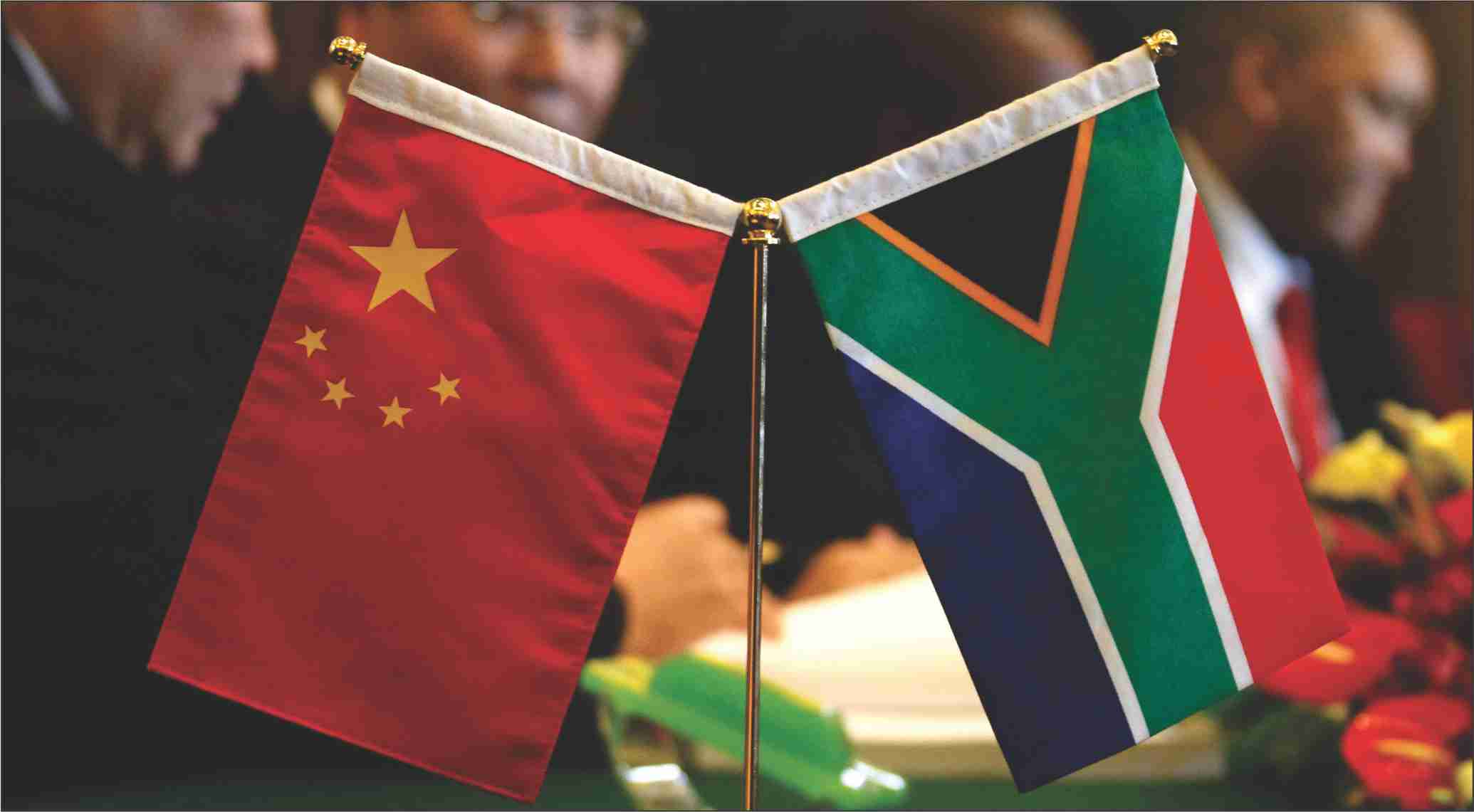



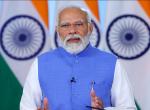



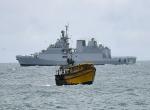
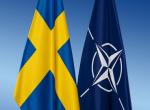
Post new comment